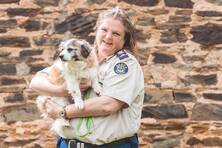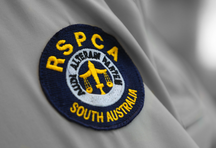
The Dog Adoption Handbook: Making Introductions
August 20, 2022Bringing a new dog home is a very exciting time for everyone in the family! First introductions can help set the scene for all other interactions, so it is important you take the time to get it right.
To do this (especially with dog-dog introductions) you will need a second person to assist to help ensure everyone is feeling safe and comfortable at all times.
Behaviour and dog interactions are complex. Please note: the recommendations provided below are only a general guide to consider during introductions and a rough example of steps that can be taken to help ensure successful friendships are formed. We recommend you invest in a qualified force-free trainer to help manage the introductions safely and with a tailored plan specifically for you and your new dog.
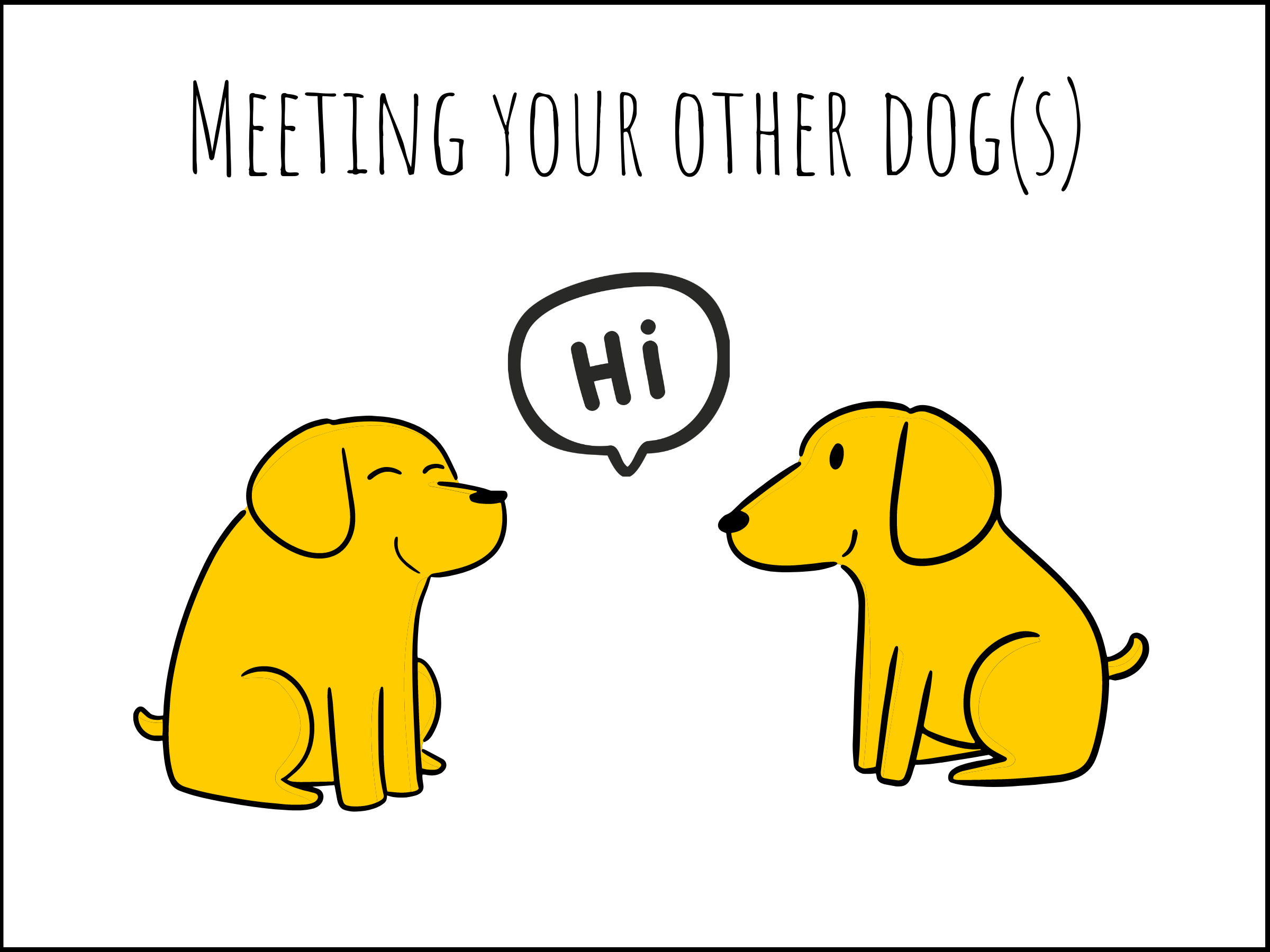
What’s the best way to introduce my new adopted dog to our older dog?
Making sure your pup is comfortable at home is very important. Carefully managing their interactions with other pets in the home will also set everyone up for success. Some dogs are social butterflies (but not as many as the Disney channel would have us believe).
Most dogs are very selective about the dogs they want to be friends with (just like us), and many are tolerant of other dogs but might struggle to live with one without their own personal space. Your existing dog might be very happy meeting new dogs on walks, but having a dog come into the home to live with them can be a whole other ball game.
Introducing a new dog to existing dogs in the home can be a complex process. Here are seven tips to help ensure your introductions are a success.
- Take your existing dog for a walk to allow your new pup time to explore the house alone. They can smell your existing dog and explore the house without the added stress of meeting a new friend while in an unfamiliar place. Then swap! So your existing dog can learn a bit more about the newcomer’s scent, while your new pup has a chance to decompress on a quiet walk around the block.
– - Allow the dogs to meet for the first time in a place away from the home. A park is a great place for this first interaction as the extra space can help keep things calm and relaxed. Make sure to take treats and give lots of praise for good behaviour – the goal is to keep this interaction relaxed and calm, and at each dog’s own pace.
–
Keep both dogs on a lead at the start, and on opposite sides of the oval/ space. Each dog handler can wander up and down their side of the oval and allow the dogs ample time to sniff the area and reinforce them for looking at each other. Walking parallel with each other for a time can help both dogs calm down and learn to associate the presence of the other dog with a walk, rather than being hyper-excited. As you parallel walk, you can slowly move closer together if the dogs are not showing signs of fear or stress. If the dogs do play, be prepared to move quickly so the leads don’t get tangled! Avoid introductions where both dogs approach each other head-on, which can be very disconcerting from their perspective.
– - Once the dogs have met out and about, you can walk them back home together. Enter through the backyard if possible (again, the additional space to move away from each other can help dogs feel safer). Be mindful that the excitement that surrounds moving through doorways (e.g. a learnt history of front door = walks, or kitchen door = meal times) may increase tension between both dogs. Carefully managing how they move around the house and teaching them to wait for doors to open can be helpful.
– - It is important to hide objects the dogs might value highly, in particular toys, chews and food. Sometimes dogs will guard food or valuable items when they are stressed, or if they are not used to sharing with unfamiliar dogs. Best to remove all risks of confrontations like this for several months before slowly introducing some very low-value toys to the environment. Likewise, some dogs can get ‘hangry’ and might be more likely to be tense and on edge around food items and food dispensing toys before they get fed in the morning or evening. Being mindful they might need some separation at these times initially (depending on their behaviour and body language) might help keep their interactions positive and friendly.
– - For the first few days in the home: supervise them closely (1 person per dog if possible) & keep the interactions short (5-10min), but frequent. Allow them to explore the house and yard together, while making sure you keep a close eye on them, but also give each ample time away from the other to decompress. If they choose to keep separate on their own accord, that’s great communication – be sure the other dog is listening by keeping them busy or distracted or physically separated with a baby gate or door. Some dogs need help learning how to settle in the presence of other dogs – constant attempts at play and interaction can be tiresome for the other dog. Sniffing and exploring in the presence of each other can be a wonderful way for them to remain calm. If there is one person per dog at the start, avoid a situation where both dogs are receiving treats from the same person. Short, supervised interactions should reduce the chances of any negative experiences. However, watch their body language closely. Remember, it is not normal for dogs to fight to work it out. Growling is an obvious sign a dog is feeling overwhelmed, fearful or uncomfortable. While we would never punish a dog for growling (and risk them associating us or the other dog with the punishment), we do need to do our best to set them up for success, so they don’t ever need to growl in the first place.
– - Provide both dogs with their own area. It’s important to ensure each dog has their own area for sleeping and eating. Until you are sure that food will not cause conflict between the pups, you should feed them separately to reduce the chances of any negative experiences where one dog is worried about their food being stolen by the other one. Not all dogs have experienced regular meals before they came to us or you. This could mean they are more likely to inhale their food and push other dogs off their bowls too. Feeding with enrichment or slow feeders and in their own rooms can help them learn to settle in. You may find one dog in the home is happy to snuggle, while the other would prefer its own space. Best to provide them both with ample time to relax apart to reduce any frustration or stress where one dog pesters the other dog too much. We all can appreciate the importance of downtime, but some dogs are simply more introverted than others.
– - As your new dog continues to settle in, you should take both dogs for short play periods and walks together and also separately – so they can build strong relationships with each other and with you. It is important to always reinforce good behaviour and to keep an eye out for signs of fear, stress or discomfort. Interacting with one, and then the other, the same way every time can help reduce one dog wanting more attention – often they’ll learn to wait patiently for their turn. Do not allow the two to interact freely or for long periods of time until you are completely certain that these interactions aren’t stressful, and that they are enjoying each other’s company. In some cases (depending on the dogs), this might extend to keeping them separated when you’re at work. For example, separating a younger, playful dog from an older dog who might want to sleep all day can help set everyone up for success while you are away from the home.
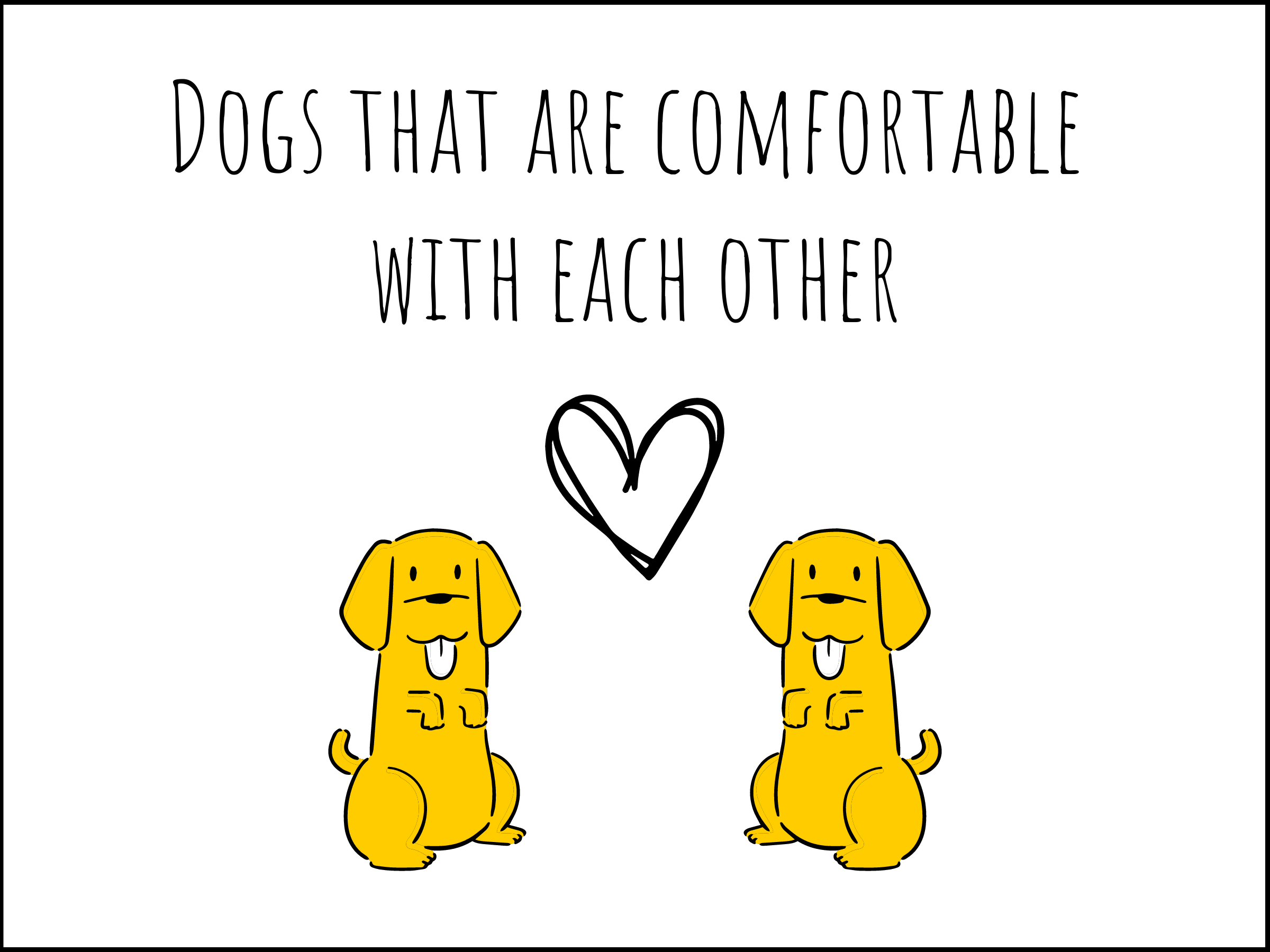
How to tell if your dogs are best friends–
-
Seek each other out
-
Have varied play (e.g. not always one dog chasing another, but how they play varies within the session)
-
Having frequent breaks and rests from play may choose to lie near each other to sleep
-
Can come away from each other if called
-
Can remain calm and relaxed in each other’s presence (e.g. companionship rather than friends in play)
-
Interact politely (e.g. no consistent stealing of each other’s toys or food, no consistent body slamming, chasing or nipping at legs from one dog to another)–
–
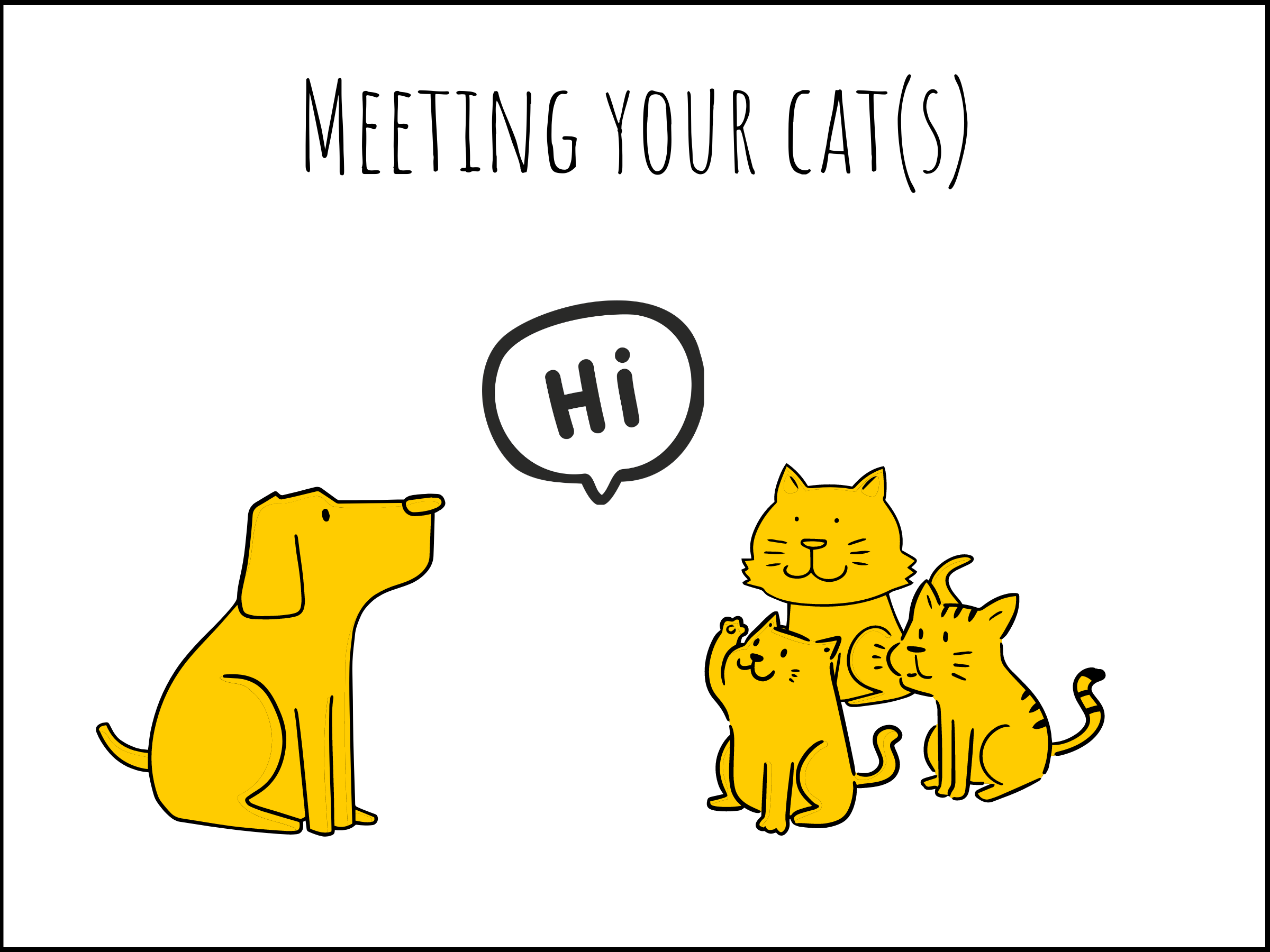
How do I introduce my new dog to my cat?
Before you start introductions, make sure you are familiar with the body language exhibited by both cats and dogs, especially signs of fear, distress or discomfort. Using a baby gate or glass door can help in the initial stages of introducing cats to dogs. While your cat may be used to having another dog in the home, bringing a new dog in can be stressful for them, and your new dog may not be used to cats. It is important to take these introductions very slowly and carefully to ensure both the cat and dog are feeling safe at all times.
For the first introduction, use a room in which your cat is easily able to escape to a safe place if they want to (for example, a room with a familiar and well-used high platform such as a multi-tiered cat scratching post) so the cat can escape from the situation and gain vertical height, as cats often like to be above the scene looking down and can feel safer that way. Having a place the cat can hide up high is even better – a large box on a shelf or desk can do the trick).
- To start, have your cat on one side of the glass door or baby gate, and your dog (on lead) on the other. Having a person on each side can be helpful to set everyone up for success. Allow the cat to move freely on their side, but work to keep their movements calm (e.g. avoid any fast movements that might excite the dog). Reinforcing both the cat (with some tasty BBQ chicken, or Dine creamy treats on a teaspoon) and the dog with tasty treats for being calm and looking at each other is a great start.
– - Repeat the first step except with both in the same room. Crate-trained dogs can be in crates with lots of enrichment toys like Kongs or Lickimats to start with. If your dog is on lead, they will likely need a high rate of reinforcement (a treat every few seconds to start with) to help them learn staying near you and not fixating on the cat is worth their while. If they pull toward the cat, avoid following them. The most critical part of these introductions is to ensure the cat is feeling as safe as possible (and the dog too!). Never force any interactions but just give your kitten/cat a lot of attention and positive experiences such as grooming and treats while they are in the same room as your dog. Just let the kitten/cat get used to the dog being there and vice versa.
– - Keep the introduction sessions short (5-10min at a time), so that any stress or frustration is kept to a minimum (ideally, we aim to set things up so there is no stress or frustration experienced by either animal). Always watch both animals’ body language to be sure they’re feeling safe and relaxed enough to proceed to the next step. This may take several days or weeks, depending on the dog and cat personalities. If your dog becomes highly excitable at any time during the introduction remove them from the room. For the next session, go back a step to ensure the dog is successful at remaining calm and able to focus on you in the presence of the cat. Practice as many times a day as possible.Once your kitten/cat and dog seem relaxed in the room together, you can move on to having your dog on a leash out of the crate, or give them slightly more lead to wander (slowly!) around the room. Keep your dog next to you on a secure leash while the kitten/cat is in the room and give them both praise and treats to reward calm behaviour.
– - Every room your dog and cat share should have ample opportunities for safety for both (e.g. crates, bedding) and height and hiding spaces for the cat. The kitten/cat should ALWAYS have somewhere safe to which they can retreat (an area the dog cannot get to, such as high platforms), even when you do feel comfortable about leaving the two unsupervised together.
You should allow the kitten/cat to choose whether they approach the dog or not. If they hiss or growl things have moved too quickly and return to the last step where the cat felt most comfortable and showed no signs of fear, escape or hiding behaviour. This might be with the glass door between them again, or even a solid door to start with – both cats and dogs can smell very well and will know who is on the other side of the door. If you don’t force the introductions quicker than either animal is feeling comfortable with, neither animal should react negatively by lunging, swiping, growling, biting or snapping. If something does happen, placing an inanimate safe object (like a large cushion) between the dog and the kitten/cat can work in the worst-case scenario. In these situations, best to invest in a qualified force-free trainer to assist in this introduction in the future and allow both dog and cat several days to decompress away from each other before trying again.
Be patient, it will probably take a few weeks of having your dog on the leash with the kitten/cat around before everyone is sufficiently comfortable to try with the dog off-leash. These interactions should still be closely supervised, and very short, but frequent. If there are any signs of fear or stress from either animal at any stage, it is best to remove the other animal from the room. For instance, if a cat swishes their tail or hisses, giving them extra space by moving the dog away from them can help them feel safer. Keep a close eye on both animals and never punish either of them for aggressive behaviour. Punishment will both: 1). Stop the obvious warning signs before a bite (e.g. growling), without addressing the underlying emotion, and will increase the chance a dog or cat ‘bites out of the blue’, and 2). Increases the chances that the animal will associate the other animal with your punishment – it’s counter-productive.
Ensure your dog and cat receive a lot of individual attention from you moving forward. Do not leave your animals alone together until you are absolutely certain that they tolerate each other, the dog chooses to relax on their mat or on the couch instead of chasing the cat, and they are all safe. If you are not sure, continue to supervise directly when you are at home or physically separate them when you are not at home.

What is the safest way to introduce my dog to children?
It is important that you manage the introduction to your family carefully and that children are directly supervised at all times with the dog or puppy. Introducing a new canine member to the family is a special and exciting time but can be a little overwhelming for all concerned. However, this can be managed with planning, so that everyone feels happy and safe.
One of the key steps is to create an environment that is calm and quiet, allowing interaction by the dog or puppy on their terms by letting them approach the child, which will generally occur relatively easily if children are themselves calm and quiet.
Teaching children to safely interact with a dog by encouraging gentleness and respect will help create a bond of mutual trust.
When it is time for the children to meet your dog, make sure the children sit calmly and quietly, and the dog will usually come to investigate out of natural curiosity. Teach the children to speak softly and slowly and gently pat the dog on the shoulder, and not on the top of their head or tail. Reinforcing the dog for calm behaviour with a food treat (by the supervising adult) helps them learn how to be safe around children and also helps them to associate children with something positive.
For confident, boisterous dogs (and puppies): It may be best to have the dog on a lead so they don’t knock the child over, or to meet through a baby gate or fence first. Confident dogs might be happy to approach and more likely to jump up, so reinforcing them for all paws on the floor as often as possible can be a great way to let them know how to behave.
For shy or nervous dogs who are hesitant to approach: It can be tempting to hold your hand out for the dog to sniff. Dogs have an incredible sense of smell and already know what you smell like before you’ve opened the door! Instead, children can help dogs be comfortable by keeping their hands in their pockets and allowing the dog to come and investigate themselves. If the dog comes closer, that is not an indication they are ready for pats. Reaching out to pat them can be unpredictable and make them more scared for future interactions. Best to allow them to sniff and move away as they need until they are approaching more confidently. Then you can change things up by holding a hand out to see if they want a brief pat on the shoulder.
Then take the focus off the dog by giving the children another activity. This way the dog can get to know the children at a pace they are comfortable with. Both shy and boisterous dogs might love a good sniff around the backyard, or going for a walk where they can get to know new children without being the centre of attention. Setting children up in front of the TV and having the dog settle nearby (on a lead if boisterous) with a food dispensing toy can be a great way to build routines around calm, safe interactions.
It is important children are always supervised by an adult around dogs, regardless of how safe, loving or calm the dog or child is. If left to their own devices, neither children nor dogs tend to make the best choices. Accidents can happen and it is never worth the risk. Allowing the dog to choose when they interact in the short term will make for a much stronger, trusting relationship long term. Make sure that your dog has an area where they can go away from the child if they are getting overwhelmed. Teach the children that when dogs are eating, sleeping, or in a crate the dog should be left alone. Allowing time for the dog to have their mad moments away from the children, and vice-versa is a great way to ensure all interactions moving forward are safe and happy ones
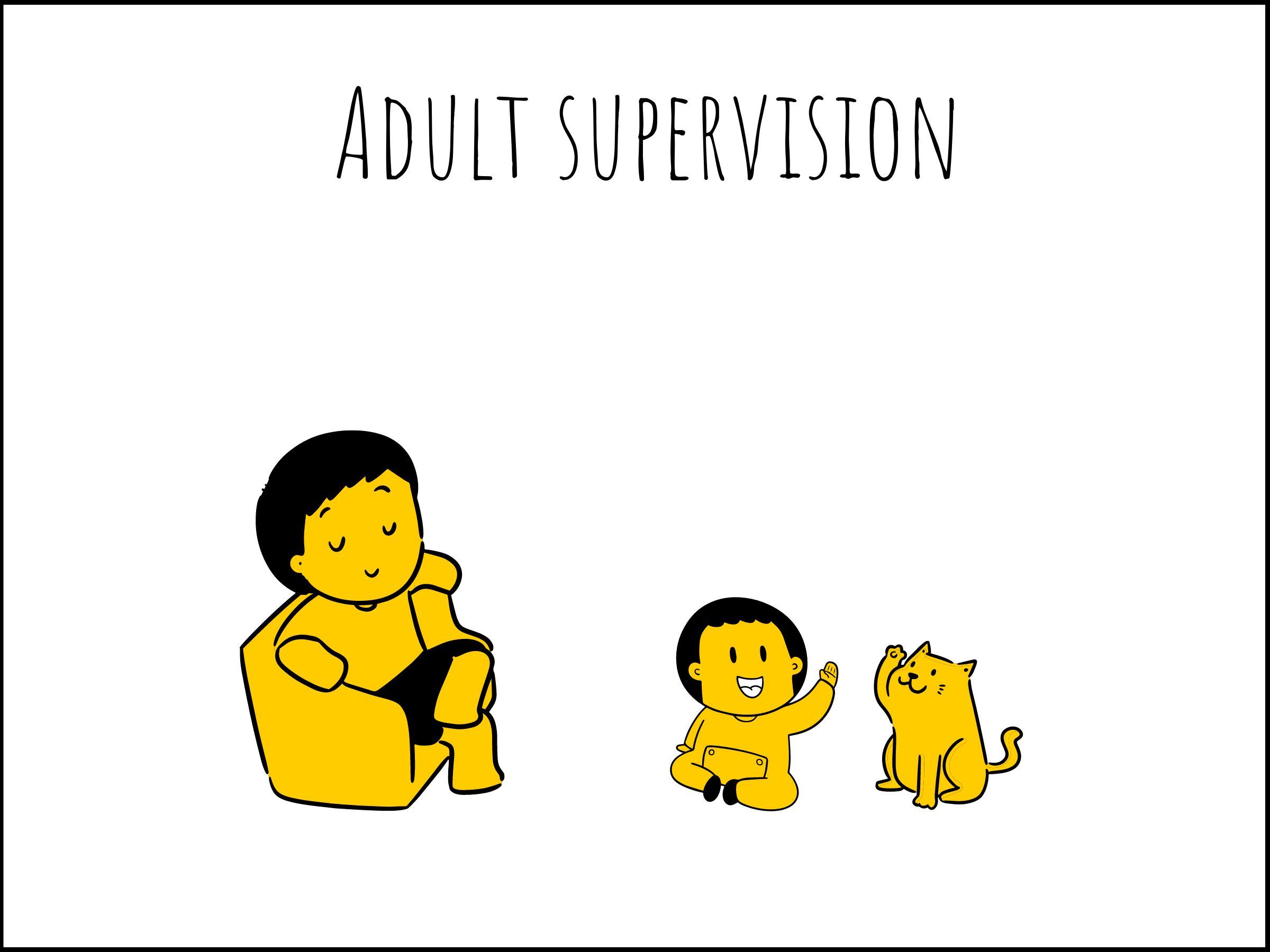
What does supervision mean for adults?
Supervising kids and dogs is vital for keeping everyone safe. Adults that are supervising interactions between children and dogs need to:
- Be able to recognise signs the dog is feeling uncomfortable, scared or stressed (check out Chapter 3 – understanding stress)
- Be able to recognise signs that the child (/children) are feeling uncomfortable or scared, or too excited to follow direction
- Be close enough to the child or the dog to be able to intervene if necessary, ideally within arm’s length
- Encourage safe and appropriate interactions from both parties (e.g. reinforcing dogs for polite greetings, or ensuring children interact respectfully with the dog without climbing all over them or poking them in the sides). Teaching children that animals also feel pain, get scared and can worry can help younger children understand boundaries with animals.
- Redirect behaviour (from the child or the dog) that is likely to escalate play or interactions into unsafe territory
- Ensure play has regular pause breaks that help with emotional regulation (e.g. 2-10min of play with short 5min breaks for a drink or exploring a new area of the backyard can work wonders for keeping things calm)
- Ensuring the dog has a safe space to get away if they need, and that the child does too – sometimes intervention is about helping one party relax even if the other is having fun
Don’t force the interaction. Your pet and children don’t have to be best friends immediately, or every day. Recognise the signs that maybe either of them don’t want to interact at that moment, and know that it is okay and not a sign of any larger issues. Everyone needs space sometimes!
Children should always be supervised around dogs. Regardless of how well behaved your child or dog is, or how much you trust either of them. Children are unable to interpret body language and warning signs from dogs as well as an adult can. It is the adult’s responsibility to be the one who has the awareness of the situation at any given time.
Here are some ideas on how you can help develop a healthy relationship between your pooch and children.
Playing ‘Go Find’ – Children can throw pieces of the dog’s breakfast and dinner on the ground for the dog to find. This is a great, safe interaction for all involved. Some dogs might need to be on a lead or behind a baby gate to stop them from mugging.
Children can learn to throw the treat and then let the dog find it themselves. If the dog is hunting for their treat or eating it, be sure the child knows not to approach.
Making enrichment – children can get creative in making pass the parcels (food inside boxes), snuffle mats, or packing other food dispensing toys to give to dogs for breakfast and dinner.
Attending training classes to help children learn how to interact and train dogs safely.
Pats on shoulders, chest or side (not the head, feet or tail). We often want to show our dogs how much we love them with a hug, but this can be very intimidating for dogs (hugging is very much a human (and primate) behaviour, not a canine behaviour). Children should avoid hugging dogs as this can make the dog feel trapped. Also, dogs may become frightened if chased by children, so this should be avoided.
–



